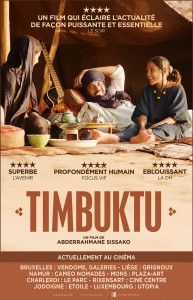Women Without Men, directed by Shirin Neshat, looks at the visually evocative and at times interspersing lives of four women in Iran in the early 1950s. It is a time of political unrest, as Prime Minister Mossadegh faced increasing opposition from US and British-backed movements. The film explores the women’s relationships with men and their understanding of sexuality, friendship, faith, and political involvement. It is based on Shahrnush Parsipur’s Women Without Men: A Novel of Modern Iran, first published in 1989.
The film is beautifully shot. Neshat’s background in photography is clearly apparent, as each scene could easily exist as a series of photographs. The colors of the film are rich. At times I was reminded of Guillermo Del Toro’s Pan’s Labyrinth, not only for the beautiful cinematography, but also for its similar (albeit far more understated) use of magical realism during a time of stark political change. I found myself wondering about how both films use female protagonists and the setting of a natural space to drive their narrative, leaving male characters in the background of their experience.
The film follows four women in Tehran who are from different ages, economic backgrounds, and religious fervor. There is Zarin, a young waif who works at a brothel for an overbearing madam. One day, a customer appears without a face. Frightened, she flees the brothel and scrubs herself raw at a public bath. She never speaks during the film.
There is Munis, who at 30 is more interested in hearing about the political upheaval on the radio instead of her inconvenient single status from her brother Amir Khan. Soon after her death Munis is reborn in a moment of magical realism, unearthed by a friend during her brother’s wedding, and joins a young group of (all male) revolutionaries.

There is Faezeh, Munis’s best friend who has a crush on Munis’s recently-engaged brother. Faezeh tells indifferent Munis: “You should hear the rumors about her. They say she’s not a virgin.” Faezeh later must come to terms with her own sense of sexuality and understanding of a feminine ideal after a group of men rape her.
And then there is Fakhri, a distinguished 50-year-old woman who leaves an emotionally abusive husband to live in an orchard away from the city. This magical place becomes an idyll where Zarin, Faezeh, and Fakhri are able to be themselves away from the expectations society places upon them.

The scenes from the film could easily stand on their own (the film started as a video installation). In one memorable scene, Zarin runs through the streets of the city after she visits the public bath and pauses in front of a group of men who are in sujood. They remain in prostration before her as she looks at them from a pillar; after a moment, they arise to see her. She scampers away soon afterwards. The image is striking—it is as if the men are seeking atonement before her (a woman).
Each woman must arrive at her own conclusion of how to live their lives, absent from the influence of men. In her rebirth, Munis is able to act as a revolutionary, free of the pressure to marry. Faezeh embraces her own understanding of femininity while at the orchard following her rape, refusing to abide by an “ideal Muslim woman” identity Amir Khan expects. Fakhri asserts her individuality by leaving her husband to live at the orchard, and arrives at her own understanding of motherhood through providing a loving and restorative environment to Faezeh and Zarin. Zarin, unfortunately, is unable to recover from her experience with men while at the orchard.
This could be the story of four women from anywhere, irrespective of their culture or religious beliefs, and how they find solace on their own terms (sometimes with loving support from each other) from the damaging societal expectations of how women “should” live. A rich allegory, it is a film that requires multiple viewings in order to see the different layers of meaning within it.

Near the end of the film, there is a shot of Faezeh returning triumphantly back to Tehran on the well-traveled dirt road after recuperating at Fakhri’s magical orchard. Almost half the screen is sky and the other half earth—a reminder of the half-dream and half-real world women find themselves in as they walk between an identity of their own and the identity forced upon them by society. It is a recurring, lonesome course that women take for the duration of their lives.













